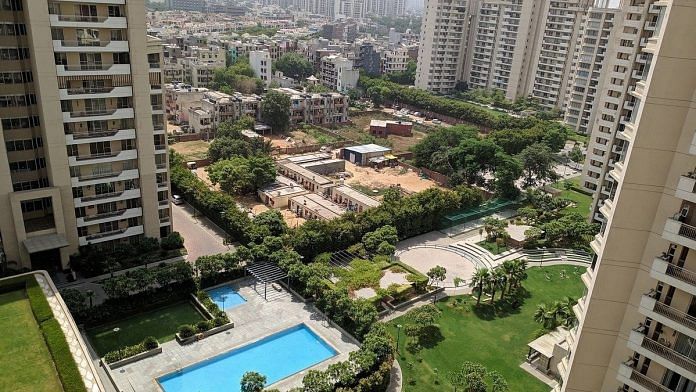
Mumbai: The Narendra Modi government’s decision to raise the differential between circle rate and agreement value of residential properties to 20 per cent will boost property sales, but its impact on metro cities is likely to be minimal, say real estate developers and property consultants.
This is because the benefit is limited to property prices up to Rs 2 crore, that too for primary sale of residential properties, and not resale.
The government move Thursday came as it sought to help developers clear unsold inventories. Under the announced period, homebuyers will not be taxed if the difference between circle rate and agreement value — which is seen as income under the law — exceeded 20 per cent.
This will effectively allow developers to bring down the prices as the earlier rate was 10 per cent. The scheme is applicable up to 30 June 2021.
According to developers and consultants, property prices in most locations of metro cities like Delhi, Mumbai and Bengaluru are over the announced cut-off price. In addition, the circle rates have been raised in the last three years even as there was a sharp correction in prices.
Circle rate, or ready reckoner rate, is the minimum price at which the property is registered. Determined by the state government, this rate changes from time to time and also varies within a state or a city, or even a locality.
When a property is bought or sold, the stamp duty and the registration charges are calculated based on the circle rate or the actual value of the property, whichever is higher.
In the last few years, property prices have corrected amid an economic slowdown. However, the circle rates have gone up.
What developers say
Niranjan Hiranandani, president, National Real Estate Development Council (NAREDCO) and Assocham said there was a fall in prices but ready reckoner rates have gone up.
“We have been requesting for the last three years that Section 43CA of the IT Act should be scrapped. Because the prices are falling but the ready reckoner rate or the circle rate are now irrelevant to the reality on the ground,” he said, referring to the Income Tax Act section under which homebuyers are taxed on the differential.
“These rates are fixed for the purposes for taxes and stamp duty. These rates are not linked correctly to the actual price, since all the states want to increase revenue. To increase revenues, they are doing this. There was a fall in prices but ready reckoner rates have gone up in the last three years,” Hiranandani added.
He said the latest relaxation will cover most cases in the country and is a welcome move, but may not help in boosting sales in metro cities.
“It will cover about 75-80 per cent cases in the country. That is very good. But it says it is only up to Rs 2 crore. It does not make sense to anybody. Let us say it is a south Mumbai property and the ready reckoner rate is wrong, that means the larger transactions will not take place,” he added.
According to an estimate by property consultant firm JLL India, as of September 2020, developers had a locked-in capital of nearly Rs 3.7 lakh crore with unsold inventory to the tune of over 450,000 units at various stages of construction across the top seven cities.
The latest move is aimed at encouraging the developers to correct property prices by offering discounts.
“The developers will now have the ability to correct the property prices. Today they could not bring down the price because there is a tax implication. So if they were to sell it below 10 per cent of the circle rate, then (homebuyers) had to pay tax,” said Anuj Puri, chairman, Anarock Property Consultants.
“So it was a double whammy for them because, one, you are selling it at a reduced price and, second, you are paying income tax at a higher price, at which you are not even selling it,” Puri said.
According to Anarock Research, there are around 5.45 lakh unsold units across top seven cities priced up to Rs 1.5 crore while another 49,290 units priced between Rs 1.5 crore to Rs 2.5 crore.
Limited scope
There is also a view that developers are operating on a thin margin and have limited scope to bring the prices down further.
“Property values in a majority of India’s prime residential markets have largely remained stagnant in the past few years. Select developers in certain markets are providing price discounts to genuine homebuyers thereby leading to further rationalisation of prices,” said Ramesh Nair, chief executive and country head, JLL India.
“This is despite the fact that most of the developers are already operating on thin margins and have limited scope for price reduction,” Nair added.
The industry added that the relaxation could have been extended to commercial real estate transactions as well.
Subscribe to our channels on YouTube & Telegram
Why news media is in crisis & How you can fix it
India needs free, fair, non-hyphenated and questioning journalism even more as it faces multiple crises.
But the news media is in a crisis of its own. There have been brutal layoffs and pay-cuts. The best of journalism is shrinking, yielding to crude prime-time spectacle.
ThePrint has the finest young reporters, columnists and editors working for it. Sustaining journalism of this quality needs smart and thinking people like you to pay for it. Whether you live in India or overseas, you can do it here.